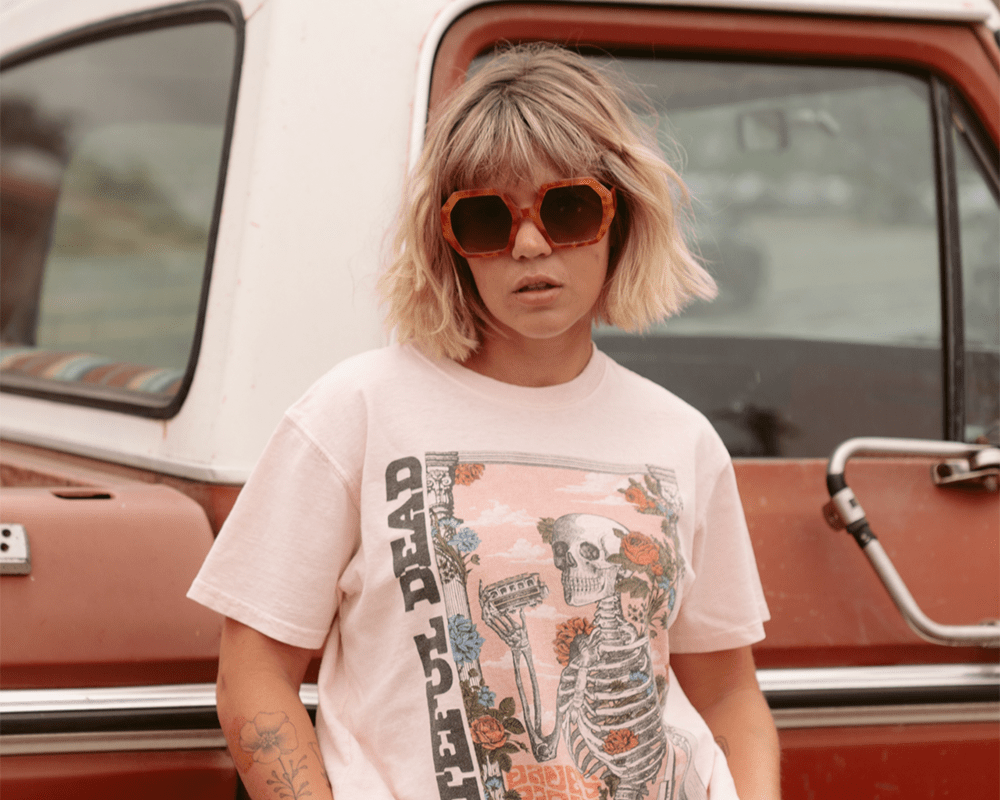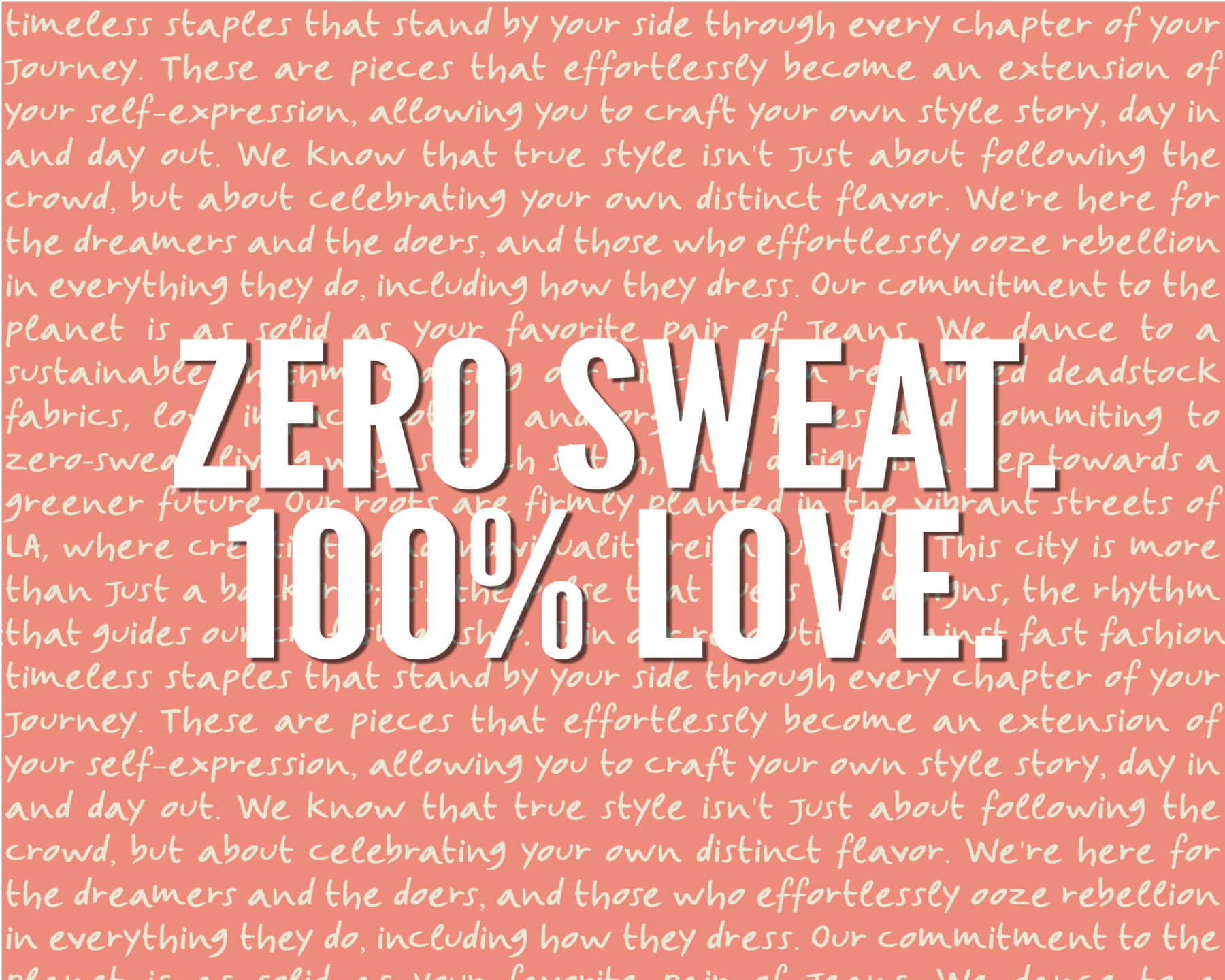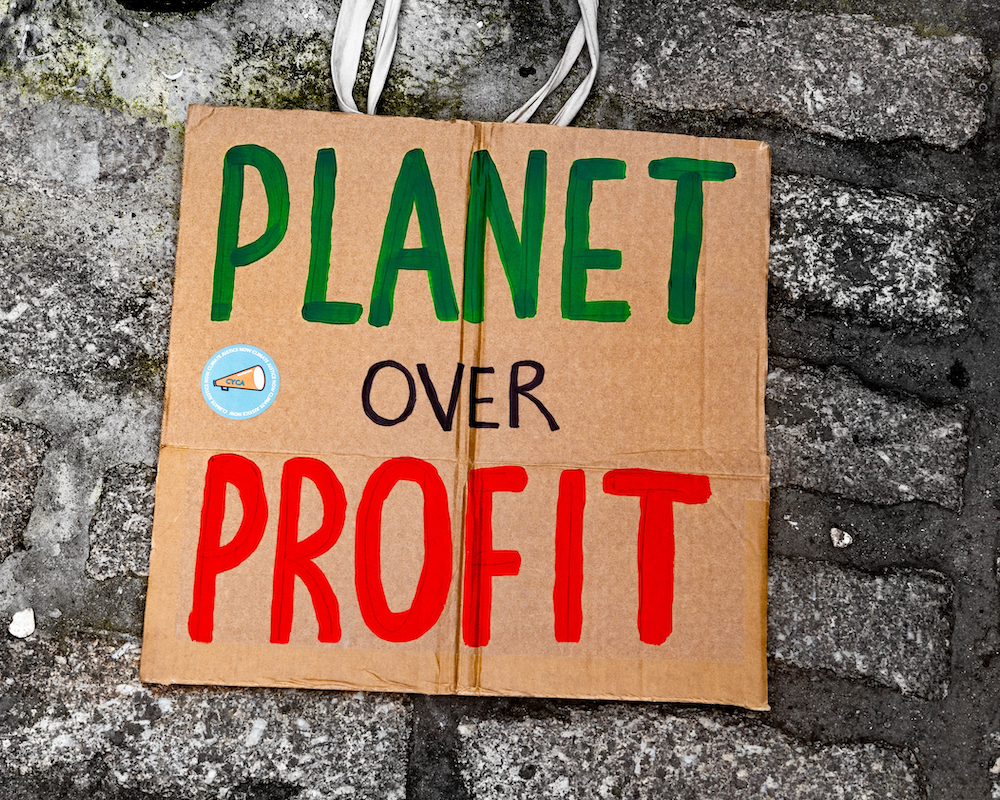The fashion industry is long overdue for an eco-friendly makeover. But when you're shopping, it's easy to forget the environmental toll behind your favorite outfits, especially when they're produced far from sight. However, the reality is that we all have a part to play in reducing the environmental impact of the fashion industry.
Whether you're a newcomer to sustainable fashion or a seasoned enthusiast, you've probably heard the call to create a circular fashion economy. But what exactly is circular fashion and why is it hailed as the future?
Here at People of Leisure, we believe in creating beautiful clothes that make you feel good without having a knock-on effect on our planet. Let's unravel the meaning behind the concept of circular fashion and explore why it's poised to revolutionize the fashion world in the best way possible.
The Linear Fashion Model and Textile Waste
The fashion industry has long operated on a linear model. This means it prioritizes the mass production and consumption of clothes. These actions are fueled by marketing, unethical greenwashing tactics, and the power of influencers.
Not only does this foster a culture of spontaneous buying by luring consumers in with low prices and 'must-have' trends, it also leads to a staggering amount of textile waste as people prematurely dispose of their clothes.
With the current linear model of fashion strongly operating on the 'out with the old, in with the new' mindset, perfectly good clothing is finding its way into landfills, getting burned, or being shipped to developing countries as soon as trends change.
All of these actions lead to various environmental and social issues. This brings us to an important question: how can we step away from the current model and make fashion circular instead?
What is Circular Fashion?
Circular fashion is an approach within the fashion industry that aims to create a closed-loop system, reducing waste and promoting sustainability throughout the entire lifecycle of clothing. Through its sustainable and responsible approach to clothing production and consumption, it addresses environmental and social concerns associated with the fashion industry.
Thankfully, the emergence of circular fashion is transforming the fashion industry's current narrative by focusing on designing, producing, using, and disposing of clothing in a way that minimizes environmental impact.
By striving for a closed-loop system, its goal is to minimize waste and extend the lifespan of clothing and textiles. Ultimately, this means that, in harmony with Circular Economy principles, circular fashion reimagines the entire lifecycle of garments.
The Three Key Principles of Circular Economy
The circular system revolves around three key principles with the goal being to minimize waste by extending the life cycle of garments or reusing materials as much as possible, ultimately paving the way for a sustainable, closed-loop system. The principles in the framework are:
Design for Durability and Repurposing
Products are crafted with longevity in mind, featuring easy repairability and recyclability or reusability at the conclusion of their lifecycle.
Resource Optimization and Renewal
The circular fashion economy prioritizes resource efficiency, minimizing waste and advocating for recycling, remanufacturing, and refurbishment to renew materials and products.
Sustainable Circular Systems
The objective is to establish closed-loop systems, ensuring continuous material cycling within the economy and diminishing the reliance on new resource extraction.
These principles illuminate how a circular economy redefines the traditional linear model by aiming to eliminate waste and reduce environmental impact as much as possible.
The Role of Sustainable Materials in Circular Fashion
One of the cornerstones of circularity in fashion is the utilization of sustainable materials. For example, using organic cotton, hemp, recycled polyester, and other sustainable fibers reduces reliance on non-renewable resources, lessening the industry's environmental footprint.
Additionally, textile recycling plays a crucial role in closing the loop. This involves breaking down used garments into fibers that can be re-spun into new materials. Not only does this process minimize waste, it also reduces the need for resource extraction and lessens the impact on the natural environment.
It's great to see that by embracing innovative business models, certain fashion brands, including ours, are integrating recycled materials into their production processes, shifting away from the mass production characteristic of fast fashion and proving that it's possible to prioritize sustainability without sacrificing style.
For example, we choose to procure and incorporate deadstock fabrics bound for landfills into their designs, thereby pursuing a more environmentally conscious approach. By upcycling this material, it’s clear to see how we minimize demands on land, water, energy, and soil resources.
Embracing Alternative Consumption Methods
What can you as a consumer do to extend clothing use and reduce waste, ultimately embracing the circular fashion system? As circular fashion encourages alternative consumption methods beyond the traditional purchase-and-dispose cycle, here are some ways to adopt mindful practices:
Quality Over Quantity
Is your closet overflowing with clothes? We've all been there.
Instead of heading to the mall every time the seasons change, consider investing in high-quality, durable clothing to ensure longevity. This will reduce the frequency of needing to replace your clothes.
Repair and Alteration
Are you guilty of disposing of your clothes every time there's a small tear or lost button? You can extend the lifespan of your clothes by mending damaged clothing or considering alterations to refresh or modify garments.
Second-Hand Shopping:
There's nothing like a trip to your local thrift store. By embracing thrift stores, vintage shops, and online platforms for second-hand clothing, you can promote reuse while reducing the demand for new production.
Clothing Swaps or Clothing Rental Services:
As the saying goes, 'one man's junk is another man's treasure'. Why not organize or participate in clothing swap events with friends or local communities to exchange clothing items and breathe new life into pre-loved pieces? This is a fantastic and fun way to embrace circular fashion.
Responsible Laundering
Follow care instructions to prolong the life of your clothing. Opt for cold water, air-drying, and gentle washing to minimize wear and tear.
Mindful Consumption
Instead of purchasing the latest trends or everything that catches your eye, be selective in your purchases.
We recommend focusing on versatile and timeless pieces that can be styled in various ways, ensuring longevity in your wardrobe.
Donate or Recycle
If your closet is overflowing with clothes you no longer wear or love, consider donating clothing in good condition to charities or recycling programs. This helps divert them from landfills, therefore supporting a circular economy.
Educate Yourself
Knowledge is power. To continue making informed choices as a conscious consumer, stay informed about sustainable fashion practices, materials, and brands committed to circular fashion.
Remember, you have more power than you think. By adopting these habits, you can actively contribute to reducing waste, promoting sustainable fashion, and embracing the principles of a circular economy.
How does Circular Fashion Benefit the Environment?
The shift towards a circular fashion economy addresses key issues like climate change and resource depletion. It also encourages conscious consumers to choose longer-lasting, high-quality garments over the allure of fast fashion's fleeting trends.
By considering the entire life cycle of clothing, from production to disposal, the industry can make strides in reducing its environmental impact. In short, circular fashion systems prioritize the longevity and quality of garments, promoting a shift from disposable fashion to durable, timeless pieces.
Creating a Circular System Together
At People of Leisure, we love how circular fashion refers to not just recycling old clothes but creating a continuous cycle where materials are constantly reused and regenerated. At our core, we pride ourselves on being a sustainable fashion brand driven by innovation, ethical choices, and a passion for crafting stylish pieces that tread lightly on our planet.
That said, a circular fashion industry calls for a collective shift towards mindful consumption. Together, let's continue making mindful choices so that we can reshape the future of fashion and create a better, greener world.






